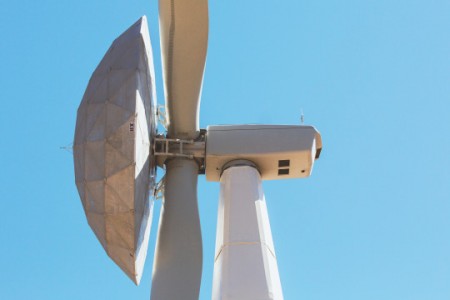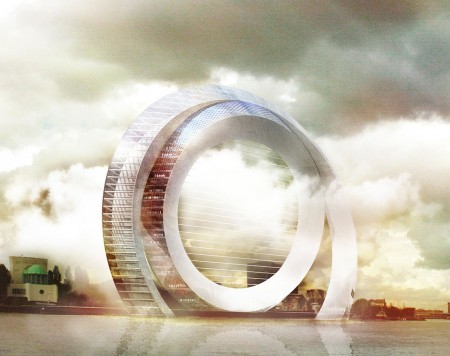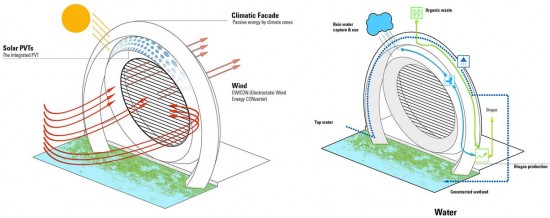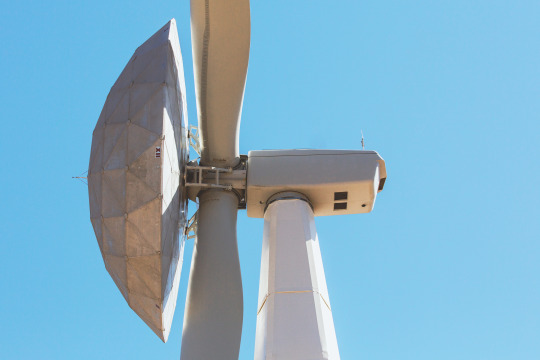June 13, 2015 – One looks like a wheel and combines power generation with a tourist landmark while the other looks like someone put an umbrella in front of a traditional three-bladed turbine. Both are turning heads.
A Windwheel that is a Tourist Attraction
Meet the Dutch Windwheel seen in this artist concept below.
It combines two three-dimensional rings, one of them a frame for what is a bladeless windmill. The technology is known as EWICON which I first wrote about back in April of 2013. Steel tubes are laid in parallel across an inner circle. Each tube contains electrostatic wind energy converters. There are no moving parts and no noise. The prototype EWICON today sits in front of a building at Delft University. Two others have been built and reside atop a building in Rotterdam.
This Windwheel, however, will dwarf all previous builds. It will incorporate apartments, a luxury hotel, a panoramic restaurant and a ring of cabins rotating 360 degrees to provide a ferris wheel and rollercoaster-like experience for visitors. In addition the Windwheel will be self-sustaining incorporating solar photovoltaic panels embedded in a passive energy skin, a rainwater collection system, organic waste and grey water recycling, and biomass to biogas conversion.
If built its Delft University designers and partners believe it will become an instant world attraction for Rotterdam, and a potent symbol of The Netherlands’ 21st century leadership in sustainable design. No cost estimates have been provided.
Meet GE’s Latest Wind Turbine Design
It is called the ecoROTR and features a 9,000 kilogram (20,000 pound) aluminum dome bolted to the front of the rotor. It looks like someone attached an umbrella to the turbine blades. A spokesperson for the company describes the problem that ecoROTR is supposed to solve stating, “when wind hits the centre of the wind turbine where the blades are attached, it’s wasted. That’s because the blades are basically levers and the same wind generates more force further from the hub.”
How does ecoROTR work? The dome rotates along with the turbine blands redirecting wind from the centre to the blade’s outer edges and improving the efficiency and performance of the entire apparatus. A reconfigured turbine can increase blade size without increasing length.
The company is testing its first ecoROTR at a 1.7 Megawatt wind turbine located in California. A side view of the field test assembly is seen in the picture above. If the trial succeeds GE may be ready to bring ecoROTR to market within the next year producing dramatic improvements in energy yield.










